
Rediscovering Japan

Rediscovering Japan
Travel (Kagoshima Part 3 (Ibusuki/Minamisatsuma))

by tomizuta
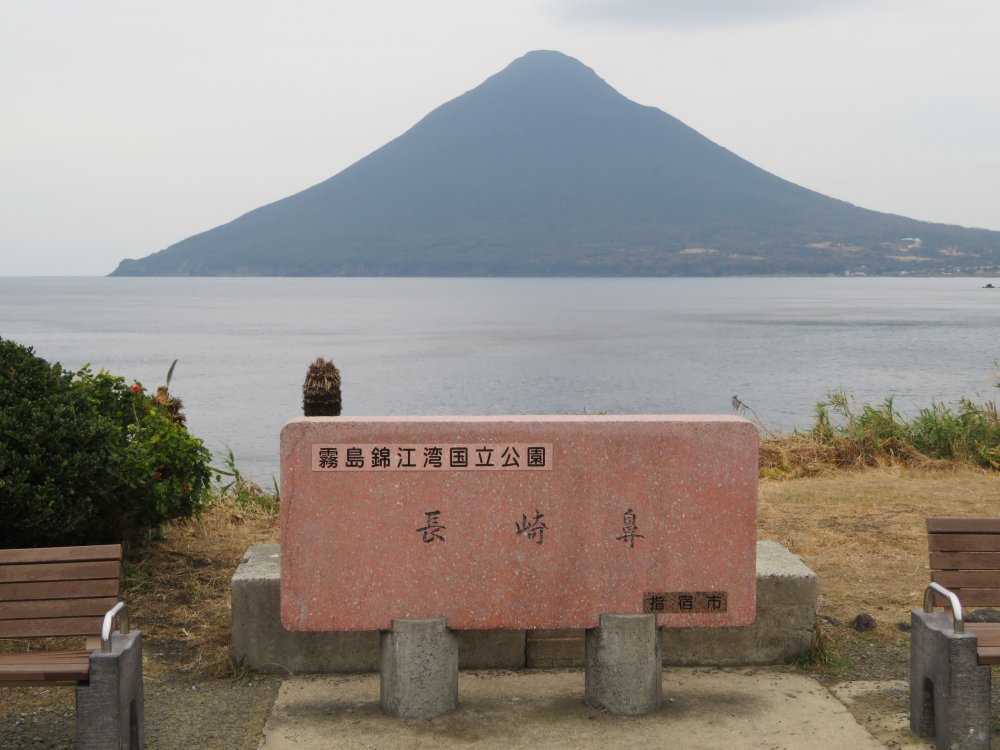
Looking west from Nagasakibana, the southernmost point of Satsuma Peninsular. The mountain across is Kaimondake.
We left early in the morning from Ibusuki Onsen and drove south for about ten kilometers to the southernmost point of Satsuma Peninsular, Nagasakibana. It was a cold day, but we parked our car at the free car park which is at a lower level than the main road. We went up to the main road and made our way towards the lighthouse at the very end.
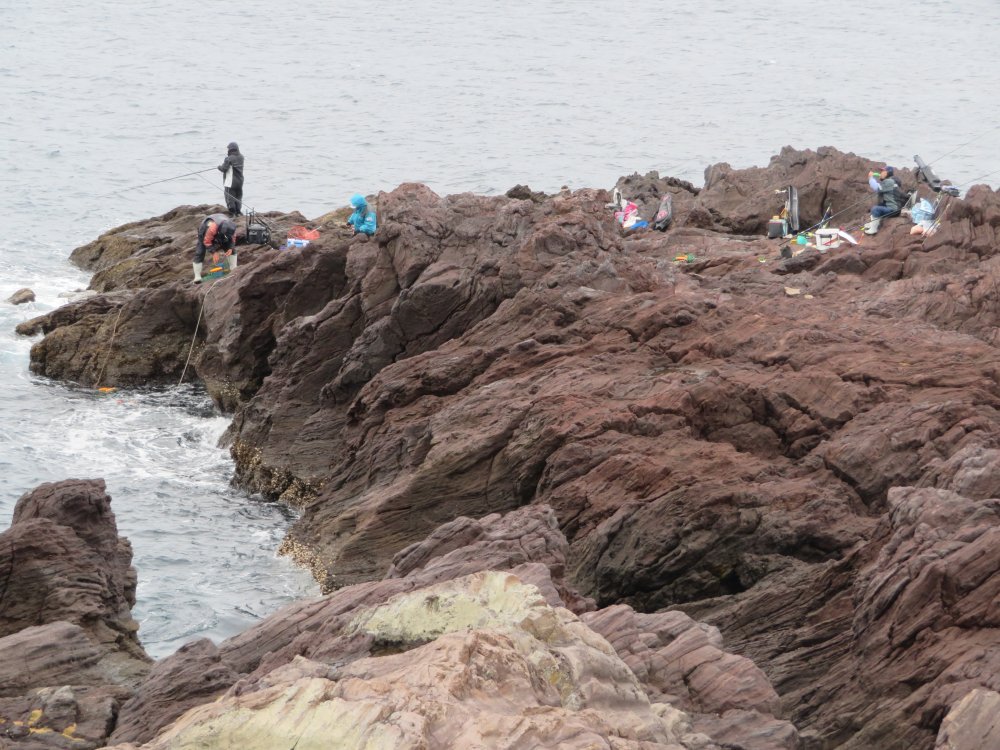
People fishing at the tip of Nagasakibana.
From here you can command a very good view of another famous mountain, Kaimondake. There are many mountains that are given the name Fuji. Kaimondake is one that is called Satsuma Fuji. It is not at all surprising when you see its beautiful cone shape. It is an active volcano.
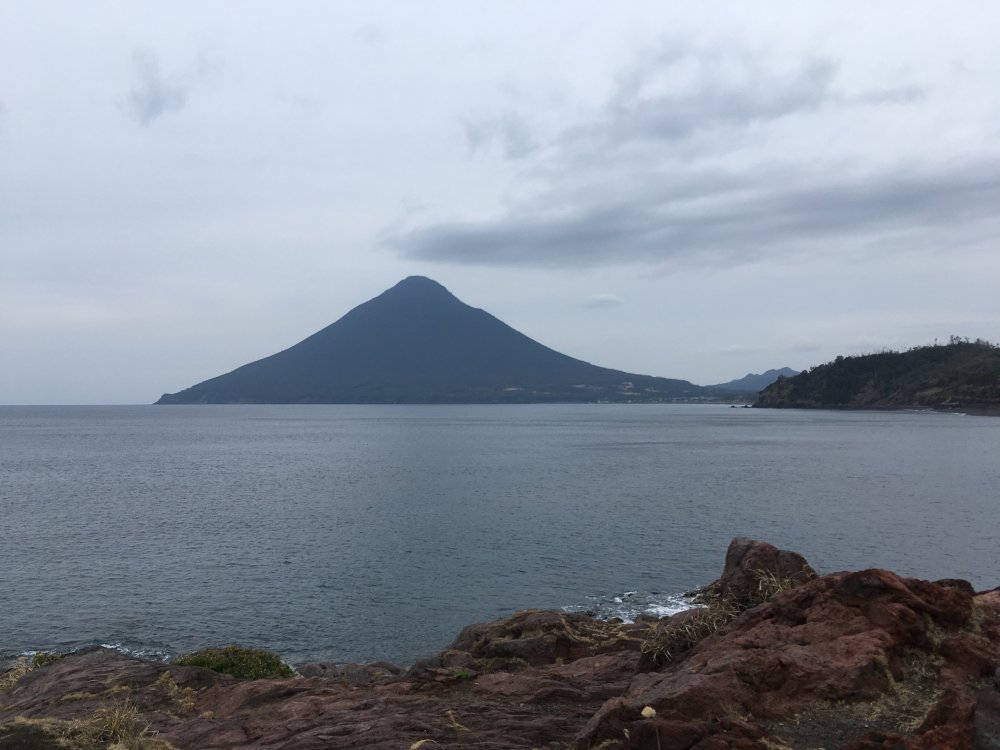
Kaimondake is dubbed Satsuma Fuji because of its resembblance to Mount Fuji.
There is an old folk lore called Urashima Tarou, which is similar to Rip Van Winkle. A kind fisherman saves a turtle that was being beaten by children. The turtle shows its gratitude by taking him on its back to a Ryuuguu Castle deep under the sea. He is welcomed by a beautiful princess (otohime) who thanks him for caring for the turtle. He is provided with huge feasts and entertained by dancing fish. After a while he gets homesick and asks to go home. Otohime agrees and as a gift gives Urashima a jewel box instructing him to never open it. Upon return, Urashima finds that everything has changed and no one knows him. Thinking that by opening the jewel box his home would be reversed to what he remembered. Immediately upon opening the box Urashima became an old man. Nagasakibana is thought to be the place this folk lore originated, and there is a shrine named Ryuuguu Jinja dedicated to Goddess Toyotama (Otohime).
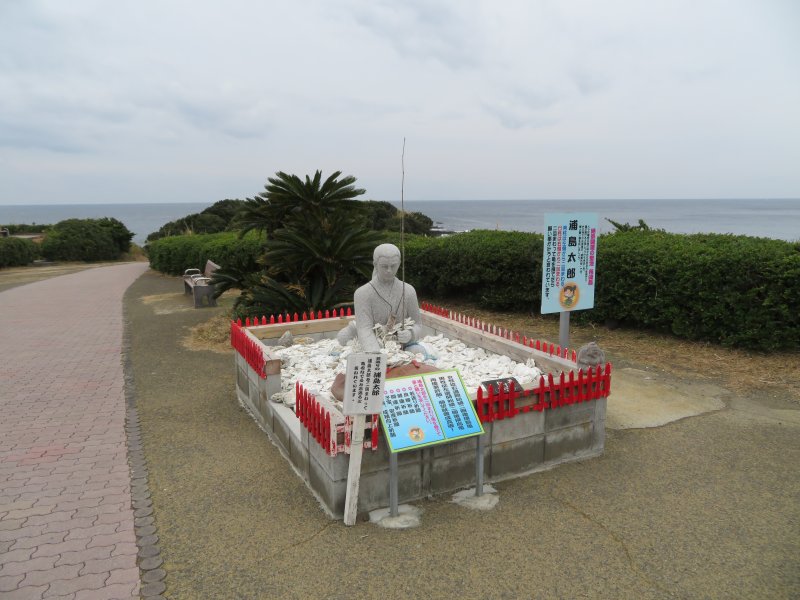
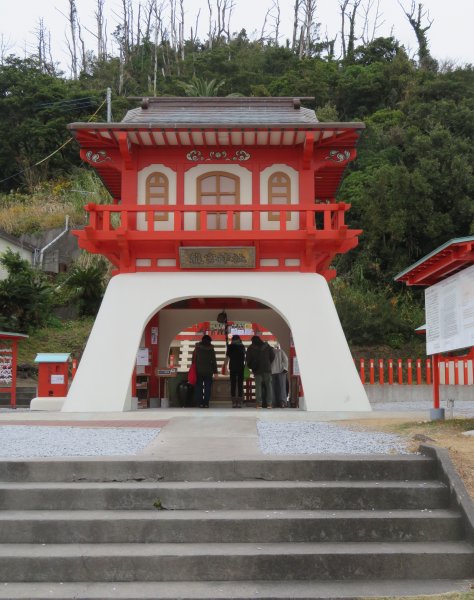
A comical statue of the folk lore character Taro Urashima (left) and Ryuuguu Jinja (right).
From Nagasakibana, we drove west and then north along the coast of Satsuma Peninsular to an Bounotsu, now part of Minami Satsuma City. It is basically composed of several harbors each within a few kilometers apart along the rias type western coast collectively called Bounotsu. Bounotsu has a long history serving as a major port for ships going to China to import advanced art and technology in the 7th to 9th century, expanding the interaction to Okinawa (formerly called Ryuukyuu) and the southern islands as well as European missionaries until Japan adopted an isolation policy, leaving only Nagaski open to China, Holland and Korea in the 17th century. From then smuggling started at Bounotsu to which Satsuma fiefdom turned a blind eye until forced to ban smuggling in the early 18th century. There was a large and powerful Buddhist temple Ichijouin of the Shingon sect that was destroyed and lost in the anti-Buddhism movement in the Meiji era. Nowadays, Bounotsu has lost its importance as a port to modern ports such as Makurazaki. Considering their historical heritage, it is a pity that more isn’t done to attract visitors.We first visited Bounotsu Kishinkan History Museum to learn the local history. The admission fee is 300 yen. The museum is located on the sea front with a picturesque view of the port which became the subject of many ukiyoes.
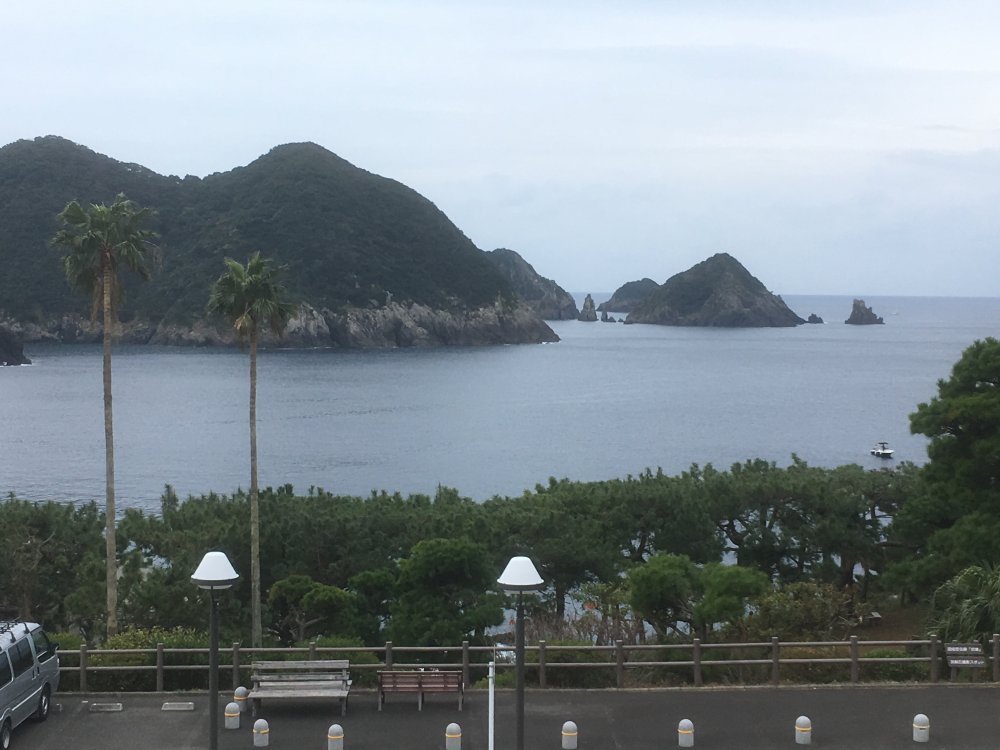
View of the rias type coast from Kishinkan Museum. The two spear like boulders shooting up from the sea is called Soukenseki (two sword boulders).
We drove further north to Ganjin Museum also in Bounotsu. Buddhism was brought to Japan and spread from the first half of the 6th century. Initially in Japan there was no ordainment system for Buddhist priests. In the 8th century, Japanese priests asked Ganjin to travel to Japan to establish a proper ordainment system. Traveling from China to Japan in those days was quite risky. On top of that some Chinese did not wish him to leave China. It was after ten years and on his sixth attempt that Ganjin finally made it to Japan in 753. His second port of arrival in Japan was Bounotsu in 754.
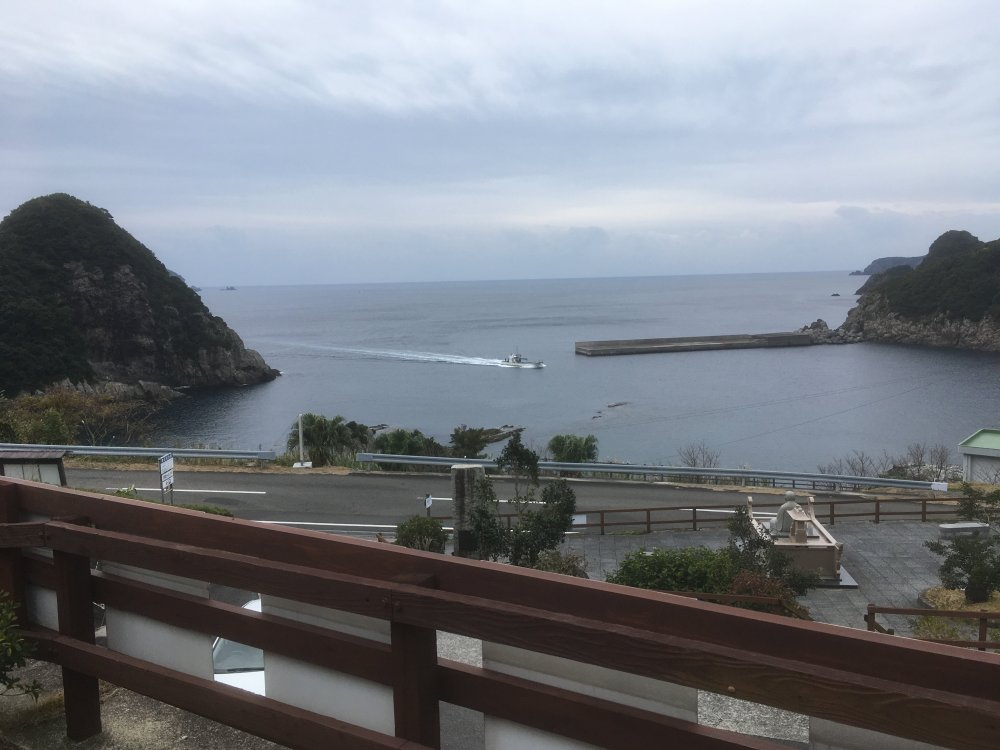
It was after ten years and on his sixth attempt that Ganjin finally made it to Japan in 753. His second port of arrival in Japan was Bounotsu in 754. Viewed from Ganjin Museum.
He was invited to Nara, the capital at that time and ordained several hundred
priests. He is also famous for founding Toushoudaiji Temple in Nara, a
World Heritage site. We were the only visitors when we got to the museum.
The curator asked us to wait for her to start a film of about fifteen minutes
on Ganjin’s life and his many attempts to come to Japan.
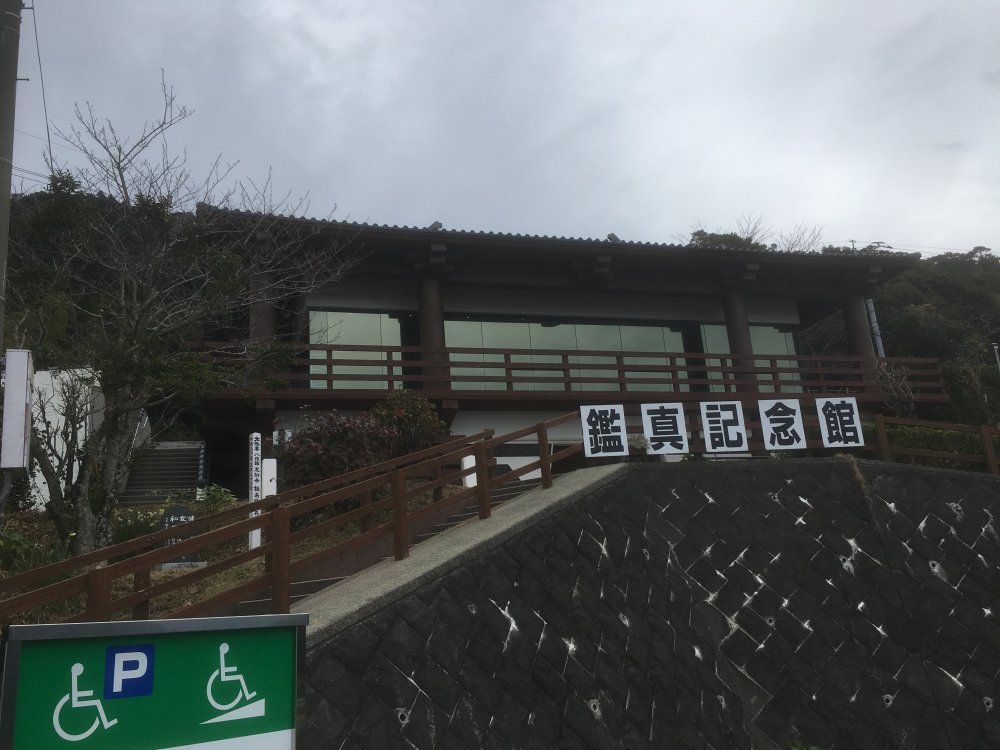
We were the only visitors to Ganjin Museum when we arrived.
We said farewell to Mount Sakurajima from the service area on the motorway on our way back to Kagoshima Airport.
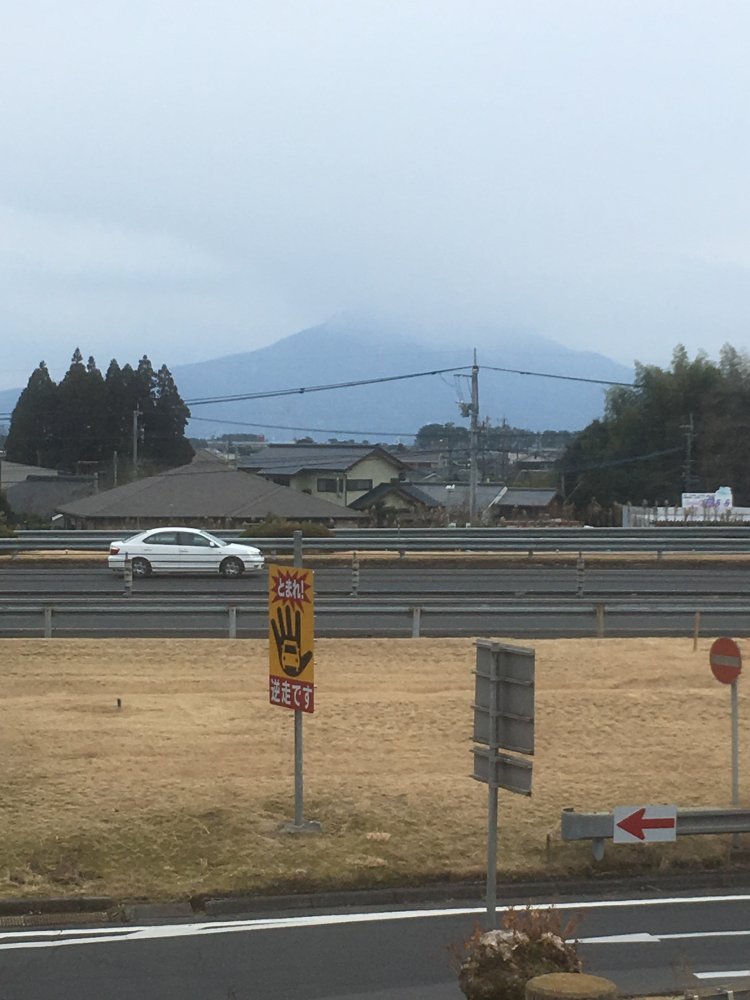
I said farewell to Mount Sakurajima.
And I didn't forget to purchase a shouchuu from Makurazaki City. There was no point in buying sake when you are traveling in Kagoshima.
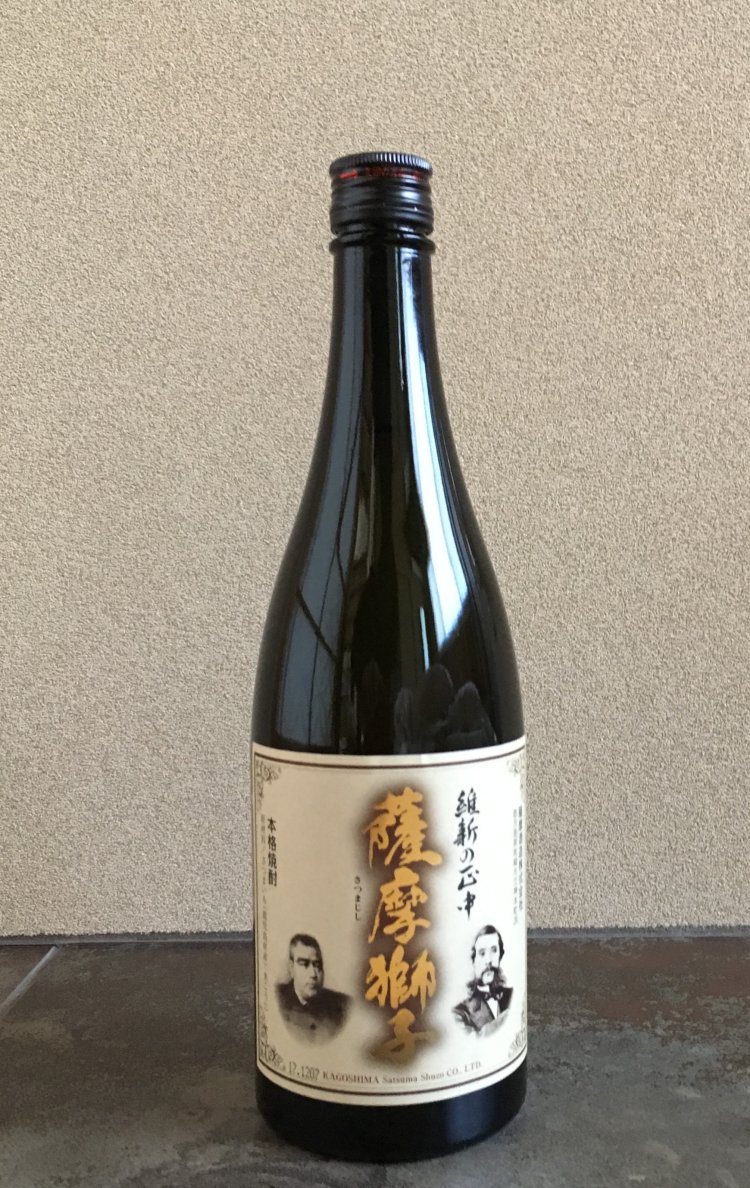
Shouchuu usually is sold in 720 milliliter bottles with an alchohol content of twenty five to thirty five degrees.